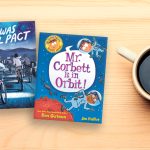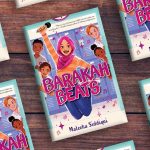I love sports. I love the action, the competition, and the drama of sports. Unlike a movie or a play, the viewer has no idea of what the end outcome will be.
Ever since I was a kid watching Lakers games with my mom, or a Muhammad Ali fight with my dad, I loved seeing athletes show what they can do at the highest level. The favorite could win, but so could the underdog. Nothing spectacular may happen or something memorable could happen. And the bigger the stage, the bigger the chance of something unforgettable happening that could inspire generations. I think of the USA Olympic men’s hockey team beating the Russians in the 1980 Olympics. They weren’t supposed to win but they did, and their gold medal game was declared the “Miracle on Ice.” I think of Hank Aaron in 1974, chasing—and ultimately breaking—Babe Ruth’s home run record, even as he received death threats. I think of Muhammad Ali winning his first heavyweight championship before shouting to all the naysayers and critics, “I shook up the world. I shook up the world.” I think of the 1999 US women’s national soccer team, led by Mia Hamm, winning the World Cup and inspiring a generation of female athletes to not only compete in soccer, but to compete in any sport they chose. I think of the New York Yankees earning championships year after year, establishing a standard of excellence to hold themselves to, regardless of their competition.
Then there’s the artistry. Sports in general require physical movements that can resemble poetry in motion. The laws of physics and gravity are tested when a great athlete pushes the boundaries with their skill and creativity. I think of Michael Jordan floating through the air like a satellite. I think of Usain Bolt streaking across a track so fast his legs are a blur. I think of the diminutive Simone Biles contorting her body effortlessly through the air. I think of Kobe Bryant moving as one with the ball to score on his opponent as if they are not even there. I think of baseball hitters with finely tuned swings, launching balls out of stadiums as if shot out of a cannon. I think of boxer Floyd Mayweather as he ducks, dives, and dodges so fast that his opponents look as if they are swinging at a ghost. I think of my favorite childhood football player, Lynn Swann, wide receiver for the Pittsburgh Steelers, leaping high in the air to make acrobatic catch after acrobatic catch, even with the game on the line. I think of Serena Williams sending her opponent scurrying back and forth as she smacks the tennis ball with force and accuracy.
As an author and photographer, I’ve written about and photographed sports with these elements in mind. My very first book, Rimshots, centered on street basketball. I wanted to show the humor, joy, skill, and artistry of the sport and bring that world to life through words and images. There were poems, stories, and snippets of dialogue that allowed me to do that. And when I pointed my camera, it was always at the body of an athlete, focusing on what they could do with a ball. I had fun showing the poetry of the game, but to show it at its highest level, I had to focus on the skills of professional athletes, so I did that with Hoop Queens and Hoop Kings.
Writing about specific athletes allowed me to focus on what made them great and stand out. Watching players from the WNBA and NBA gave me a whole new appreciation for the artistry of the game. That was seventeen years ago (as of this writing in 2021), and the level of skill and artistry has only grown, so I was thrilled to finally be able to do a follow-up to each, with Hoop Kings 2 coming out in fall 2021, and Hoop Queens 2 coming out a few years later.
When I wrote the original books, I had only done books that focused on basketball up to that point, so my style didn’t change much poem to poem. But in the years between the original and the sequels, I grew as a writer in general and as a poet in particular. Using verse, I told of Muhammad Ali’s and Jack Johnson’s lives in boxing, Major Taylor’s life story in cycling, and how Jimi Hendrix became a great guitarist. I showcased twenty-eight people and events from Black history with a variety of poetry styles and voices to teach and inspire. I wrote a novel. I wrote inspirational sports stories featuring kids. I told the story of our country and our place in the world. I wrote of Greek mythology, the Negro League in baseball, and the joy of music and dance. I even wrote a basketball opera with songs and monologues!
Through all of that, my toolbox for expression expanded. So when I sat down to write about WNBA and NBA players again, I took my cue from athletes and competed against my old self to become my best self. I had fun doing it and was reminded of why I love sports: the action, the competition, the drama, and the artistry. All of it continues to inspire me, which I hope will inspire others.






